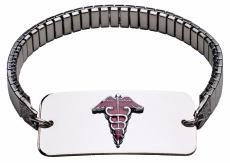National Institutes of Health
- The primary NIH organization for research on Diabetes Type 2 is the National Institute of Diabetes and Digestive and Kidney Diseases
 A service of the U.S. National Library of Medicine
A service of the U.S. National Library of Medicine  National Institutes of Health
National Institutes of Health
Diabetes means your blood glucose, or blood sugar, is too high. With type 2 diabetes, the more common type, your body does not make or use insulin well. Insulin is a hormone that helps glucose get into your cells to give them energy. Without insulin, too much glucose stays in your blood. Over time, high blood glucose can lead to serious problems with your heart, eyes, kidneys, nerves, and gums and teeth.
You have a higher risk of type 2 diabetes if you are older, obese, have a family history of diabetes, or do not exercise.
The symptoms of type 2 diabetes appear slowly. Some people do not notice symptoms at all. The symptoms can include
A blood test can show if you have diabetes. Many people can manage their diabetes through healthy eating, physical activity, and blood glucose testing. Some people also need to take diabetes medicines.
NIH: National Institute of Diabetes and Digestive and Kidney Diseases
 (10/16/2012, HealthDay)
(10/16/2012, HealthDay)
 After Diabetes during Pregnancy, Healthy Diet Linked to Reduced Type 2 Diabetes Risk
After Diabetes during Pregnancy, Healthy Diet Linked to Reduced Type 2 Diabetes Risk (10/09/2012, National Institute of Child Health and Human Development)
(10/09/2012, National Institute of Child Health and Human Development)
 Study Finds Interventions to Prevent Type 2 Diabetes Give Good Return on Investment
Study Finds Interventions to Prevent Type 2 Diabetes Give Good Return on InvestmentReferences and abstracts from MEDLINE/PubMed (National Library of Medicine)
